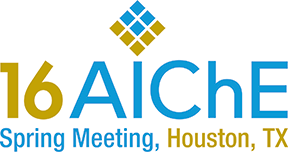

With promulgation of the PSM Standard 29 CFR 1910.119, OSHA mandated that a management system comprised of several well-defined elements be established “for preventing or minimizing the consequences of catastrophic releases of toxic, reactive, flammable, or explosive chemicals.” The Process Safety Information (PSI) element of the PSM rule states “the employer shall document that equipment complies with recognized and generally accepted good engineering practices (RAGAGEP).”
Although OSHA does not explicitly use the term continuously improving in their regulatory standards, they use equivalent terms such as accurate, complete, clear and on-going. For example, in the Appendix C compliance guidelines of 29 CFR 1910.119, OSHA uses the term “complete and accurate” in lieu of “continually improving.”
Recent incidents and enforcement actions demonstrate OSHA’s expectation for operating plants to maintain a continually improving PSM system. In 2007, OSHA initiated a special enforcement initiative (OSHA’s National Emphasis Program [NEP]) specific to refineries and chemical plants. Of the citations issued, many involved missing, inaccurate and incomplete process safety information as well as dysfunctional management system processes.
The PSM standard is exceptional in its vision, design and implementation, but it could have been made better by the inclusion of metrics and KPIs. As is often said, “if it can’t be measured, it can’t be managed,” and is likely a reason why so many process safety management system programs have failed to grow and measure up to industry best practices as well as OSHA expectations.
When considering a management system approach in this highly regulated process safety environment, four key business drivers should first be considered, i.e., risk, regulatory, operations, and profits. Then, building a management system process around those four drivers involves a unique management system structure of people, processes and tools/technology.
Central to the growth and continuous improvement of those three elements will be the proper design and implementation of metrics and KPIs. It will be the institutionalization of KPIs and the subsequent reporting and action planning process which drives the continuity and sustainability of the plan-do-check-act rudiments of any management system approach.
KPIs are the critical life’s blood of a properly designed management system in that they institutionalize processes and drive accountability, which in turn provides for continuity and sustainability. An effective KPI system and data mining process takes into consideration business drivers, success factors, targets, improvement actions, and performance measures. But knowing which metrics should be developed into KPIs is the challenge.
With KPIs, the idea is to tap into the data rich potential of an enterprise asset management (EAM) system. And from this data and informational structure is extracted the 20% of data that 80% of operators, engineers, managers and execs want to see, with the challenge being identifying that 20% of key information. Further consideration is necessary for the more refined development of KPIs which then provide the need-to-know requirements of stakeholders at a ‘dashboard’ level of awareness.
What so many KPIs fail to do is drill down deeply enough to facilitate the identification of basic and root causal factors associated with problem solving for optimal performance. And there can be too many of these focused metrics, with the pitfalls being much the same as usability problems associated with multiple alarms annunciating during a process unit upset, commonly referred to as alarm flood. And just as with too many alarms, poorly designed alarms and improperly set alarm points, metrics flood and confusioncan set in and negatively impact the problem solving process.
Proper development, implementation and management of metrics and KPIs should involve many of the same concepts utilized in alarm rationalization and management, and is really more of an art form than many realize. It requires critical thinking and strategic design aptitude which draws on frontline-to-exec level appreciation for what good looks like.
Too often, the process of data gathering and metrics reporting is more about presentation than substance, and lacks real problem solving and asset and process optimization potential. Metrics and KPIs should be specifically designed for problem solving performance improvement issues at the basic and root cause levels, and built around the four business drivers of risk, regulatory, operations, and profits.
Furthermore, a metrics-driven management system process should be designed to create a competitive environment for improving process safety as well as asset performance, optimization, and profitability. I stress the word ‘competitive’ in that a focusedmetrics-driven management system process will drive itself and grow by fostering a healthy and productive incentive among stakeholders, i.e., person to person, organization to organization, unit to unit, plant to plant, division to division, company to company, etc.
And, what so many management system development initiatives fail to do is involve a three phase design and implementation process in determining the following: where are we now, where do we want to go, and how are we going to get there. Such management system approaches have been successfully applied to product quality, asset integrity and protection, process optimization, equipment reliability, and various performance improvement initiatives.
So, what follows here is a discussion of time-tested rudiments, nuances and culture behind the who, what, when, where and how of designing and implementing a focused, metrics-driven management system.
